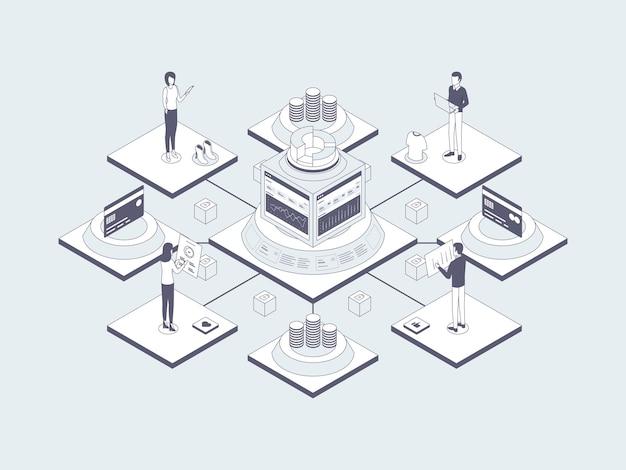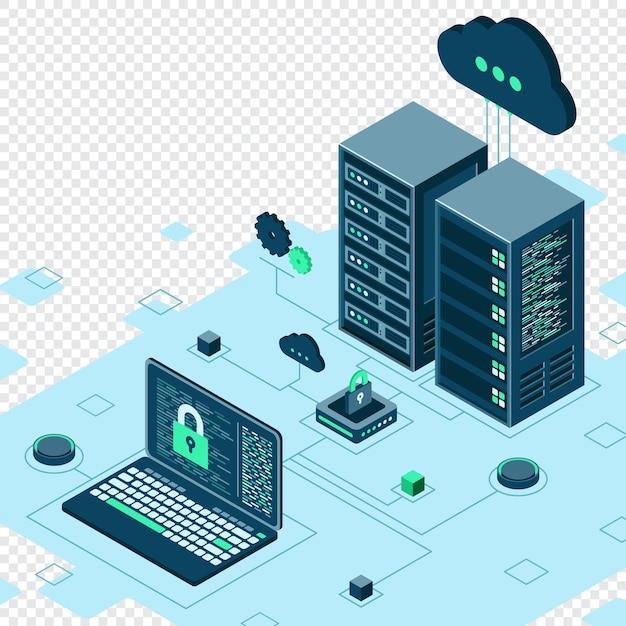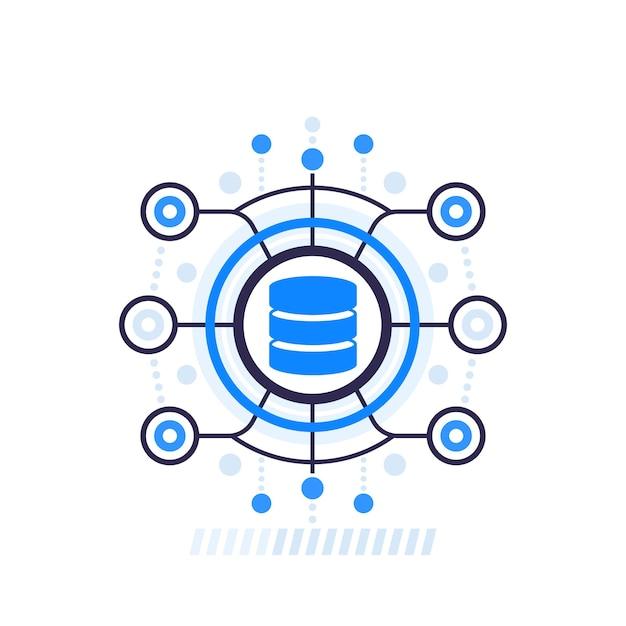You’ve heard about data centers and data hubs, but what about an integrated data hub? This technology solution has taken the business world by storm, and for many vital reasons.
At its core, the integrated data hub is a centralized platform that gathers all your company data, regardless of the source or format. The concept is simple – get all data, assess and manage it, then analyze it for business decisions.
Imagine this: instead of working with fragmented data sources, the integrated data hub provides a complete view of all your company data. With integrated data hubs, business leaders can make better decisions, faster, saving valuable time and resources.
In this blog post, we will be discussing the integrated data hub in detail. Specifically, we’ll cover examples of data hubs, what an integrated data center is, and, of course, what an integrated data hub is. Let’s get started!
What is an Integrated Data Hub
An integrated data hub is a centralized location where all data is stored and can be accessed from multiple applications. This hub is often used by organizations that use multiple software applications to conduct operations, and they need all the data from these applications to be centrally located. An integrated data hub enables organizations to store, manage, and analyze data from multiple sources in real-time, significantly reducing the time it takes to access critical data and make informed decisions.
Benefits of an Integrated Data Hub
Increased Efficiency
By providing a central location for all data, an integrated data hub eliminates the need to locate data from disparate sources. This saves time and increases productivity.
Improved Data Accuracy
An integrated data hub also ensures data accuracy as all data is stored in one place, reducing the risk of data loss, and creating a single source of truth. With a centralized location, any data changes are reflected immediately, eliminating the need for manual intervention.
Real-time Reporting and Analytics
One of the most significant benefits of an integrated data hub is that reports and analytics can be generated on real-time data. This allows for accurate insights and decision-making.
Scalability
The integrated data hub is designed to grow with the needs of the organization. It can accommodate large data volumes and handle data from multiple sources.
Use Cases for an Integrated Data Hub
Healthcare
The healthcare industry generates vast amounts of data, including patients’ medical records, laboratory results, and insurance information. Integrated data hubs can serve as a centralized location to store this data to provide healthcare professionals with quick access to the patient information they need to make informed decisions about care.
Retail
Retail companies often have multiple platforms for sales, inventory, customer loyalty, and e-commerce. An integrated data hub can be used to consolidate all this data, providing retailers with a 360-degree view of their customers. This data can be used to optimize inventory, supply chain logistics, and increase sales.
Finance
Banking and insurance companies can use integrated data hubs to manage their customers’ financial data. This data can be used to track customer behavior and make informed decisions about financial products and services.
An integrated data hub is a powerful tool for managing data from multiple sources. It increases efficiency, improves data accuracy, and allows for real-time reporting and analytics. The benefits of an integrated data hub can be experienced across several industries, including healthcare, retail, and finance. By leveraging an integrated data hub, organizations can make informed decisions quickly and accurately, boosting their bottom line.
Examples of Data Hubs
A data hub is a platform that enables organizations to store, manage, and share data across different applications or systems. Here are some examples of data hubs:
1. Amazon Web Services (AWS) Data Hub
The AWS Data Hub is a platform that provides data scientists, data engineers, and other analytics professionals with a centralized place to discover, manage, and share data. The platform enables users to search for and discover datasets, share data with others, and collaborate on data projects using a variety of tools and services.
2. IBM Watson Studio
IBM Watson Studio is an end-to-end data science and machine learning platform that enables data scientists and analysts to build and deploy models and applications at scale. The platform includes a data hub that enables users to access and manage data from various sources, including databases, cloud storage, and other applications.
3. Snowflake Data Cloud
Snowflake provides a cloud-based data platform that enables organizations to store, manage, and analyze large volumes of data. The platform includes a data hub that provides users with a unified view of their data, making it easy to access and analyze data from different sources.
4. Google Cloud Platform (GCP) Data Hub
The GCP Data Hub is a platform that provides a centralized location for discovering, managing, and sharing data across different applications and systems. The platform includes a data catalog that makes it easy to search for and discover datasets, as well as tools for collaboration and data governance.
5. Microsoft Azure Data Factory
Azure Data Factory is a cloud-based data integration tool that enables users to create, schedule, and orchestrate data pipelines across different sources and destinations. The platform includes a data hub that provides a centralized location for discovering and managing data, making it easy to share data across different applications and systems.
In conclusion, these are just a few examples of data hubs available in the marketplace. Each platform has its unique features, capabilities, and benefits. By leveraging a data hub, organizations can streamline their data management processes, improve collaboration, and gain insights that drive better business outcomes.
Integrated Data Center
An integrated data center (IDC) is an advanced data center that integrates all of an organization’s information technology (IT) resources into one cohesive system. IDCs combine high-density hardware, software-defined networking, and cloud-native applications, all of which are managed through a single interface.
Benefits of an Integrated Data Center
Simplified Management
IDCs make managing IT infrastructure easier and more streamlined. Instead of managing individual servers, storage arrays, and networking equipment, organizations can manage everything through a single interface. This makes it easier for organizations to monitor and manage their entire IT infrastructure.
Better Resource Utilization
IDCs are designed to be highly efficient, which means they can make better use of an organization’s IT resources. By consolidating IT resources into one system, IDCs can reduce power consumption and free up space and resources that can be used for other purposes.
Increased Flexibility
IDCs are designed to be flexible so that they can adapt to changing business needs. They can be easily expanded or scaled down to meet changing demand, and they can incorporate new technologies and applications as they become available.
Challenges of an Integrated Data Center
High Upfront Costs
IDCs can be expensive to deploy and manage. Organizations need to invest in high-density hardware, software-defined networking, and cloud-native applications, all of which can be expensive.
Technical Expertise
Managing an IDC requires a high level of technical expertise. Organizations need to have trained professionals who can manage and maintain complex IT systems.
Security Concerns
IDCs can pose security risks, especially if they are not properly secured. Organizations need to take steps to secure their IDCs against threats such as cyber-attacks and data breaches.
In conclusion, IDCs offer a more robust and efficient alternative to traditional data centers. By combining hardware, software, and networking into one unified system, organizations can simplify management, increase resource utilization, and improve flexibility. However, IDCs also come with challenges such as high upfront costs, technical expertise requirements, and security concerns. Despite these challenges, many organizations are adopting IDCs as a way to improve their IT infrastructure and stay competitive in today’s fast-paced business environment.
What is an Integrated Data Hub
An integrated data hub is a system that connects all data sources within an organization into a single platform. This platform provides a central location for storing and managing all the data collected by the organization. It helps companies streamline their data management processes and gain a holistic view of their business operations.
How Does an Integrated Data Hub Work
An integrated data hub works by pulling data from various sources, such as databases, spreadsheets, and even cloud services. The data is then normalized and made consistent, making it easier for organizations to analyze and use it.
What Are the Benefits of an Integrated Data Hub
-
Improved Data Quality: With an integrated data hub, the data is consolidated in one place and cleansed, which enhances its quality and accuracy.
-
Increased Efficiency: An integrated data solution streamlines the data management process and eliminates data duplication, reducing manual effort and human error.
-
Better Insights: An integrated data hub allows for the analysis of combined data sets to reveal insights that would not be possible with siloed data sources.
-
Cost Savings: An integrated data hub reduces the need for multiple data repositories and data integration tools that can be costly to maintain and operate.
What Are the Key Capabilities of an Integrated Data Hub
-
Data Integration: The ability to extract, transform, and load data from disparate sources into a single platform.
-
Data Cleansing: Ensuring that data is accurate, complete, and consistent before it’s loaded into the system.
-
Master Data Management: Maintaining a single, authoritative source of data across the organization.
-
Data Governance: Ensuring that data policies and standards are adhered to across the organization.
In conclusion, an integrated data hub is a powerful tool that enables organizations to manage their data more effectively, improve their decision-making processes, and achieve their business objectives. By consolidating data sources and providing a central location for data management, companies can gain deeper insights, lower costs, and improve their overall efficiency.


